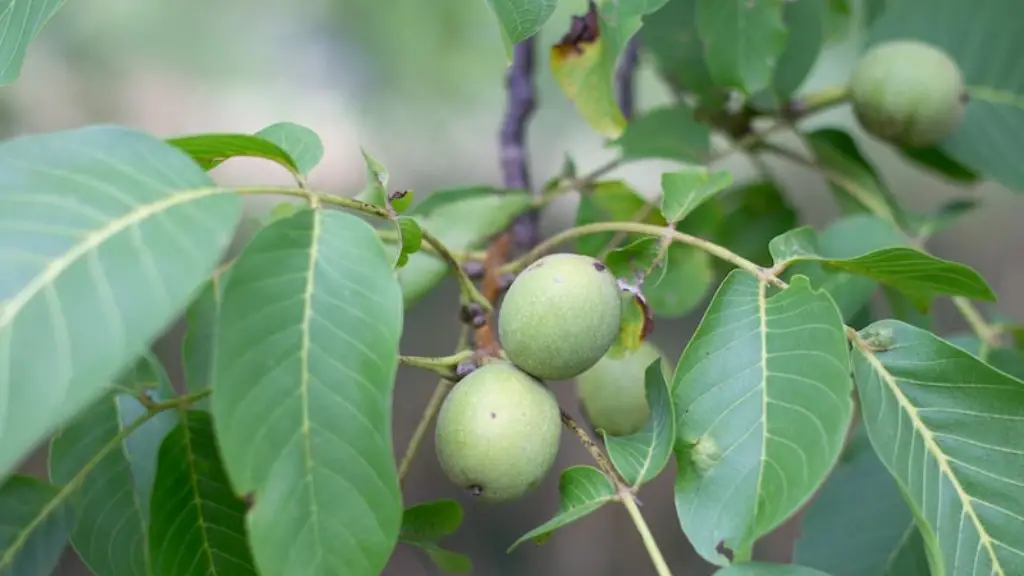The Life Cycle of a Palm Oil Tree
The palm oil industry has a great potential to assist in the development of the local communities where it thrives. Palm oil tree cultivation is one of the most important sources of income in tropical regions, and is a major global commodity. It is therefore important to understand the life cycle of a palm oil tree and how it is harvested.
Palm oil trees require a unique environment to thrive, and generally grow in a humid, low-lying area. The trees thrive in an environment with a high temperature that ranges between 27 to 32 degrees Celsius and a relative humidity of more than 60 percent. This environment helps to foster the growth of the tree which is able to reach around 20 metres in height.
In order to cultivate a healthy palm oil tree, it is important to consider the micro climatic conditions, the soil characteristics and the availability of water. The trees require a large amount of water for several months and that is why they thrive in low-lying regions. The tree is also very sensitive to shade and will not perform well under shady conditions.
The tree will typically take between three to five years to fully mature and is harvested by hand. The palm oil tree produces a red oval-shaped fruit. The fruit is harvested when it is ripe and is then processed to extract the oil. The fruit is then dried at a controlled temperature and is then pressed to extract the oil.
Palm oil trees are a major source of income for small farmers in tropical regions and have become increasingly important in recent years. The demand for palm oil is likely to continue to grow as it has a wide range of applications in food, cosmetics and other industries.
Harvesting and Processing of Palm Oil Trees
The harvesting of the palm oil fruit is a very labour intensive process. The fruit must be collected by hand and it is usually done by labourers, who are paid a daily rate for their work. Harvesting is normally done in the early morning when the fruits are ripe, and the labourers must pick the fruits carefully to avoid damaging them.
Once the fruits have been harvested, they must be processed to extract the oil. The process of extracting the oil is done in factories and involves crushing the fruits, filtering the extract and then boiling it. The boiling process separates the oil from the solids and the oil is then ready to be used.
The processing of the palm oil is highly efficient and the oil can be extracted quickly. The oil is then sold in bulk to large companies and can be used in a variety of ways, ranging from cosmetics to cooking oil. The oil is also a popular component in many processed foods, such as biscuits and bread.
The extraction of palm oil is highly regulated, and the harvesting and processing of the fruit is carefully monitored by local governments and international agencies. This ensures that the extraction and processing of palm oil is carried out in an ethical and sustainable manner.
The Conservation of Palm Oil Trees
The palm oil industry has been the subject of criticism due to deforestation and habitat destruction caused by the expansion of plantations. The industry has taken steps to ensure that the sustainability of the industry is maintained and there is an increasing focus on conservation.
The harvesting of the palm oil tree is carefully monitored and regulated by local authorities and many companies are now looking to implement sustainable practices in order to reduce their impact on the environment. Companies are also looking to plant a greater number of trees to ensure that there is a steady supply of palm oil.
The conservation of the palm oil tree is essential, not only for the local environment, but also the global economy. The palm oil tree provides an important source of income for local communities and is a major global commodity. It is therefore important to ensure that the tree is protected in order to maintain a steady supply of palm oil.
Uses of Palm Oil Trees
Palm oil is a versatile oil and can be used in a variety of applications. It is increasingly used as a cooking oil and is a popular component in many processed foods, such as biscuits and bread. The oil is also used in cosmetics, household products and pharmaceuticals.
The palm oil tree is also used for its bark and leaves, which are made into curtain fabric and baskets. The bark can also be used to make sisal, a woven fabric that is used to make rugs, bags and hats.
The palm oil tree is also an important source of food for many animals, including monkeys and parrots. The oil provides them with much needed energy during the dry season and the fruits can be eaten by them as well.
The palm oil tree is an important source of income for local communities and has become increasingly important in recent years. The versatility of the tree and its abundance make it a valuable resource and its conservation is essential for its future growth.
Environmental Impact of Palm Oil Trees
The environmental impact of the palm oil industry has been widely criticized. The industry has been blamed for deforestation and the loss of habitat for many endangered species. Although there has been an increase in awareness of the issues surrounding the palm oil industry, there is still a need to put in place measures to ensure that its impact is kept to a minimum.
One of the measures that companies are beginning to take is to implement sustainable practices, such as reducing their reliance on pesticides and fertilizers and limiting the number of trees that are planted. This ensures that the impact of the industry on the local environment is minimized.
Many companies are also looking at alternatives to palm oil and are beginning to use vegetable oil and other oils that are less damaging to the environment. This helps to reduce the impact of the industry and helps to ensure that the environmental impact is kept at a minimum.
The environmental impact of the palm oil industry has been widely criticized and it is essential that companies ensure that their practices are sustainable and ethical in order to reduce their impact on the environment. Although there is still more work to be done, the industry is beginning to take steps to ensure the sustainability of the environment.
The Future of Palm Oil Trees
Given its versatility and abundance, the palm oil tree is set to remain an important global commodity. The demand for palm oil is likely to continue as it has a wide range of applications in food, cosmetics and other industries. The tree also provides an important source of income for local communities and is an important part of the global economy.
In order to ensure the sustainability of the palm oil industry, companies are increasingly looking at ways to reduce their impact on the environment and to ensure that the practices are ethical and sustainable. Companies are also looking to increase the number of trees that are planted in order to ensure a steady supply of the commodity.
The palm oil tree is an important part of the global economy and its conservation is essential. The future of the industry is likely to be determined by the ability of companies to maintain sustainable and ethical practices and to protect the environment. The future of the palm oil tree is therefore largely dependent on the efforts of companies, governments and local communities.





